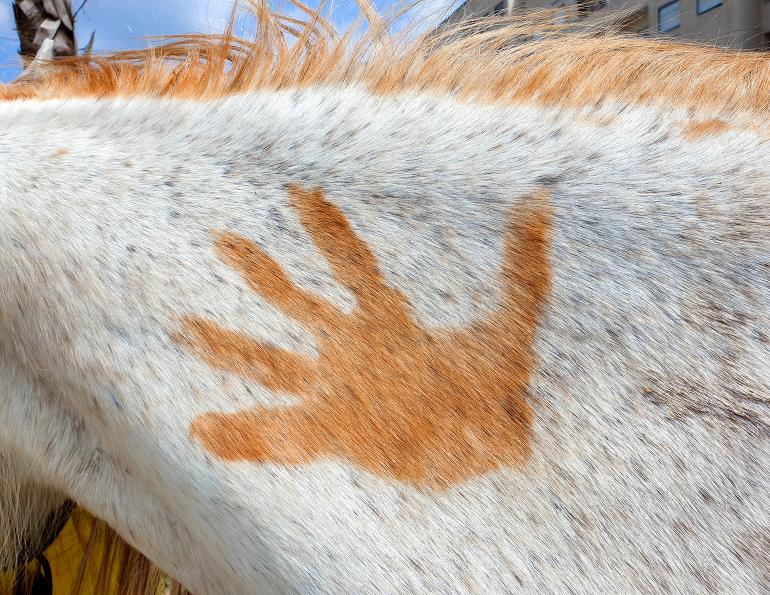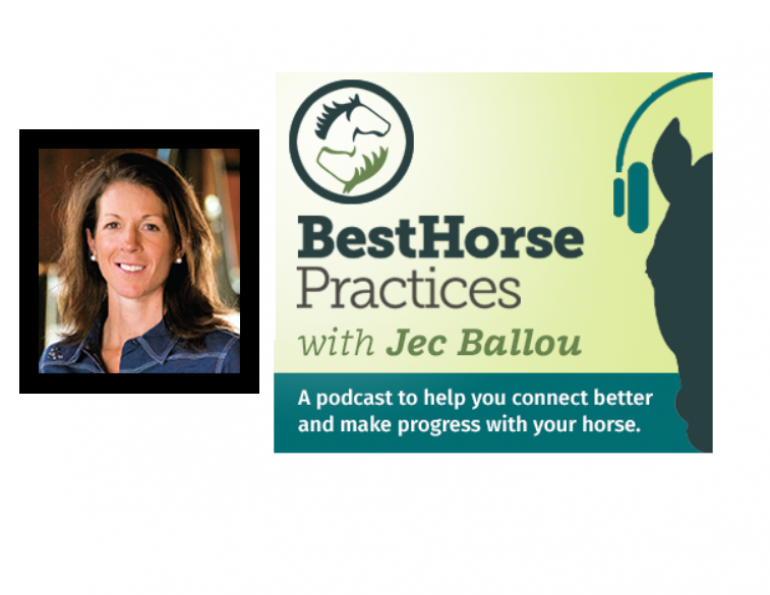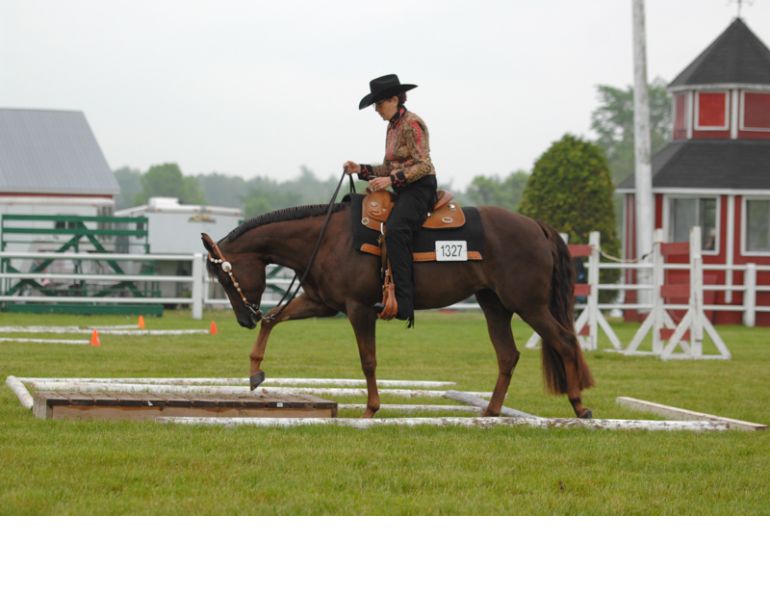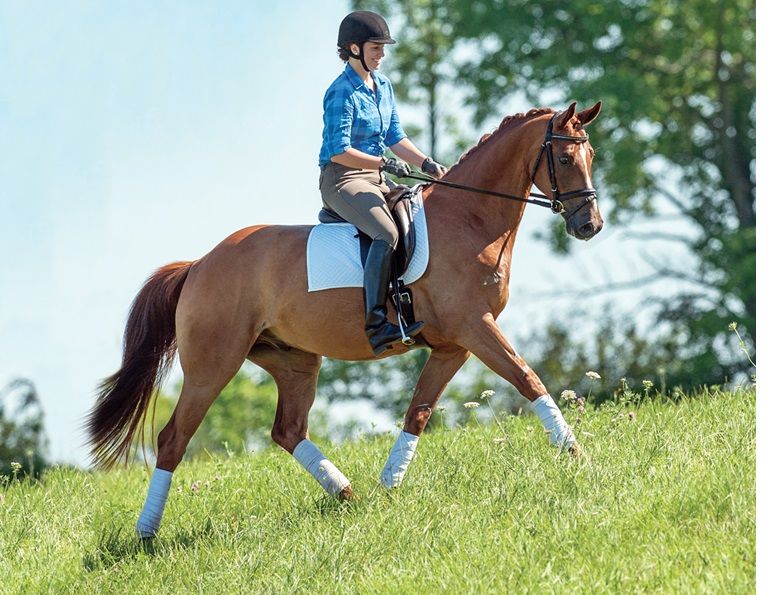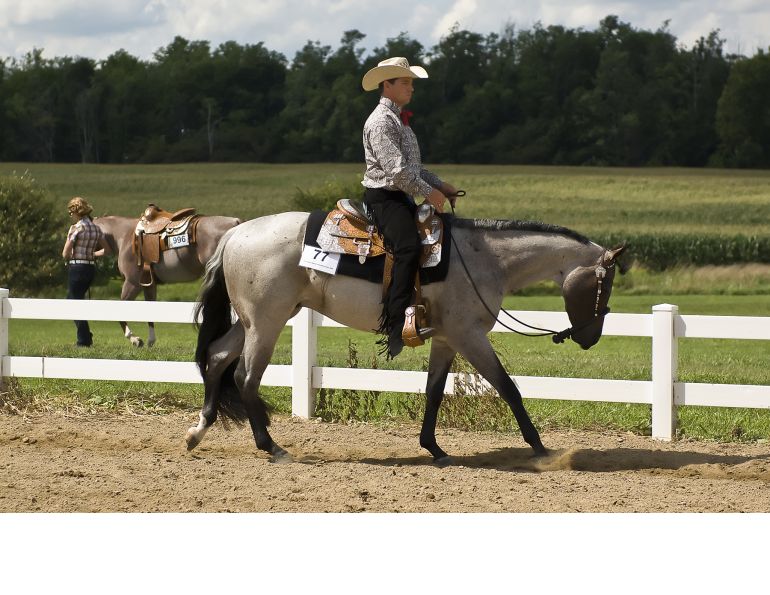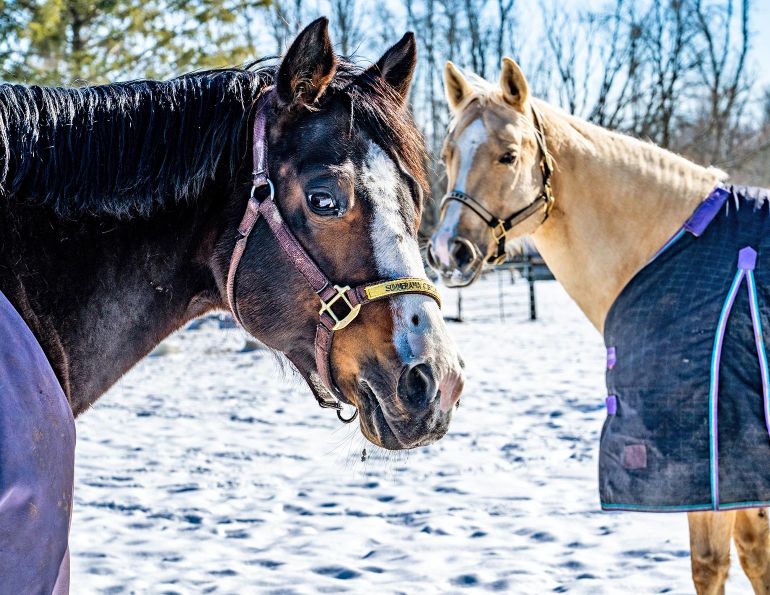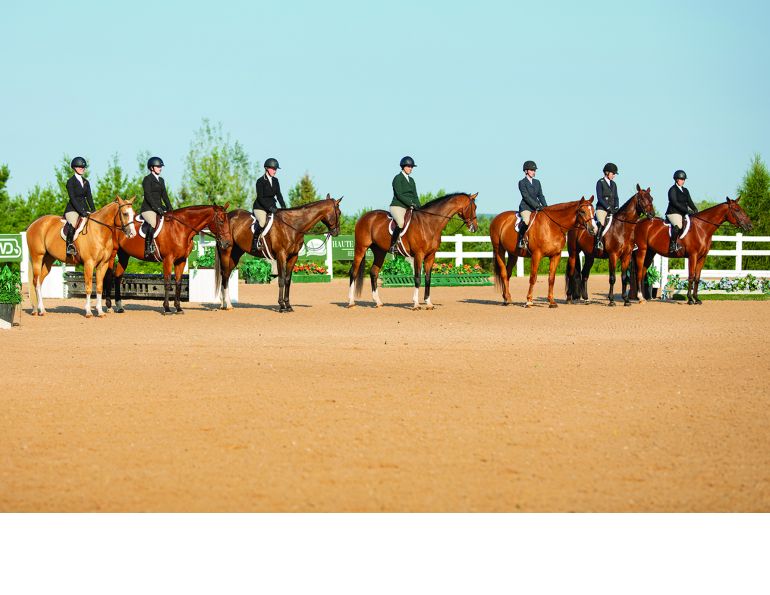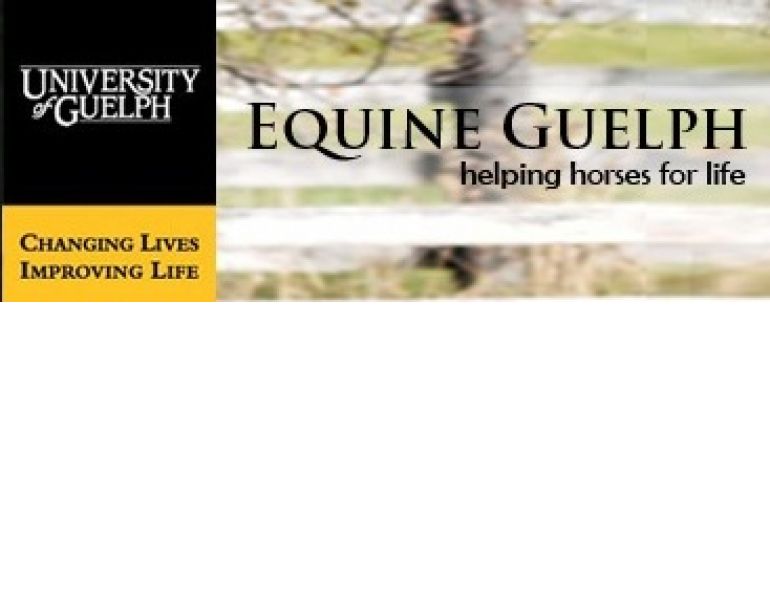By Jess Hallas-Kilcoyne
According to the American Quarter Horse Association (AQHA) 2012 handbook, “A good [Western] pleasure horse has a free-flowing stride of reasonable length in keeping with his conformation. He should cover a reasonable amount of ground with little effort. Ideally, he should have a balanced, flowing motion, while exhibiting correct gaits that are of proper cadence. The quality of the movement and the consistency of the gaits is a major consideration.”
“Conformation determines movement,” describes Robin Gollehon, who with husband, Roger, owns Gollehon Quarter Horses in Versailles, Kentucky, in her article, ‘Conformation Clinic: Western Pleasure Prospects.’ “Standing still, a horse has to look like he has the natural ability to perform.
|
ABOVE: Three-time AQHA Western Pleasure World Champion and the #2 Leading Sire of Open Performance Winners, One Hot Krymsun, owned by Rebecca Bailey of Ohio, represents the ideal Western pleasure horse type, with his sloping shoulder, long forearm, strong hindquarters, and level topline. BELOW: He moves as a competitive Western pleasure horse should – with smooth, level paces.
|
“The modern Western pleasure horse tends to be taller, have less muscle mass in the shoulder and hip regions, and tends to have steeper angles to the shoulder and pastern than the typical Quarter Horse-type,” says Jerry B. Black, DVM, in ‘The Western Performance Horse: How to Select the Right One for the Job.’ The steeper shoulder, deep hindquarters, and a longer line from hip to hock allow the horse to move with maximum efficiency.
“Compared to, let’s say, a dressage horse, there’s far less animation in the stride of a pleasure horse,” says certified Equine Canada coach and AQHA specialized judge Lindsay Grice, of Orangeville, Ontario. “The gait is flat, long, and low to the ground, with minimal joint flexion, and he will have a level topline.”
A level topline is the natural result of his conformation; the neck should be set at a height and angle that encourages the horse to carry his poll at a height equal to or slightly greater than his withers. A deep chest, long forearms, wide, flat knees and hocks, and short cannon bones give strength and stability to the horse’s frame.
Ultimately, a successful Western pleasure mount is best described as a “flowing, balanced, and willing horse that gives the appearance of being fit and a pleasure to ride.” (AQHA Handbook).
Just keep in mind, Grice cautions, that “the Western pleasure horse isn’t trained so much as he’s finessed. What I mean is that the winner these days is slow and cadenced because he wants to be that way naturally. You’re not going to create a top Western pleasure horse out of one that isn’t bred to be so. They want to be slow. They want to carry their necks level. That’s how they’re bred. The training is just the icing on the cake.”
Main Article Photo: River Bend Designs - The AQHA Handbook describes the ideal Western pleasure mount as “a flowing, balanced, and willing horse that gives the appearance of being fit and a pleasure to ride.”
This article originally appeared in the September 2012 issue of Canadian Horse Journal.



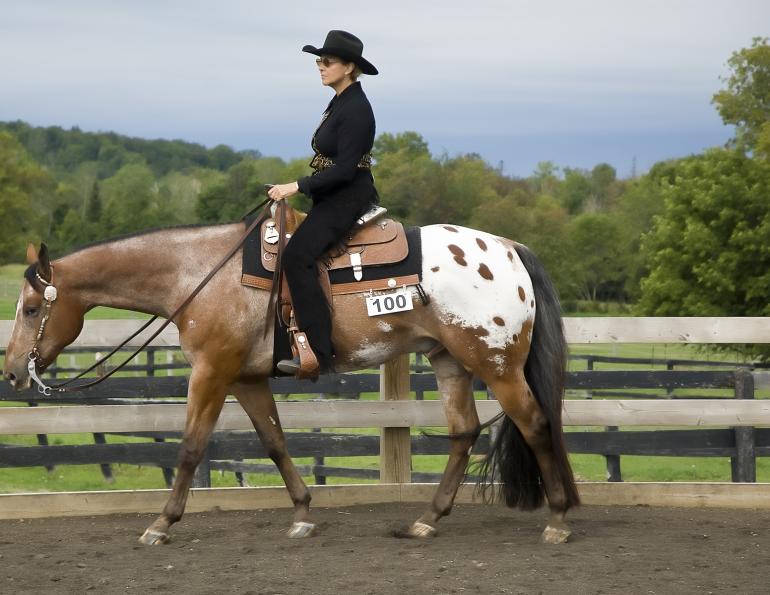
 Photo: Cappy Jackson
Photo: Cappy Jackson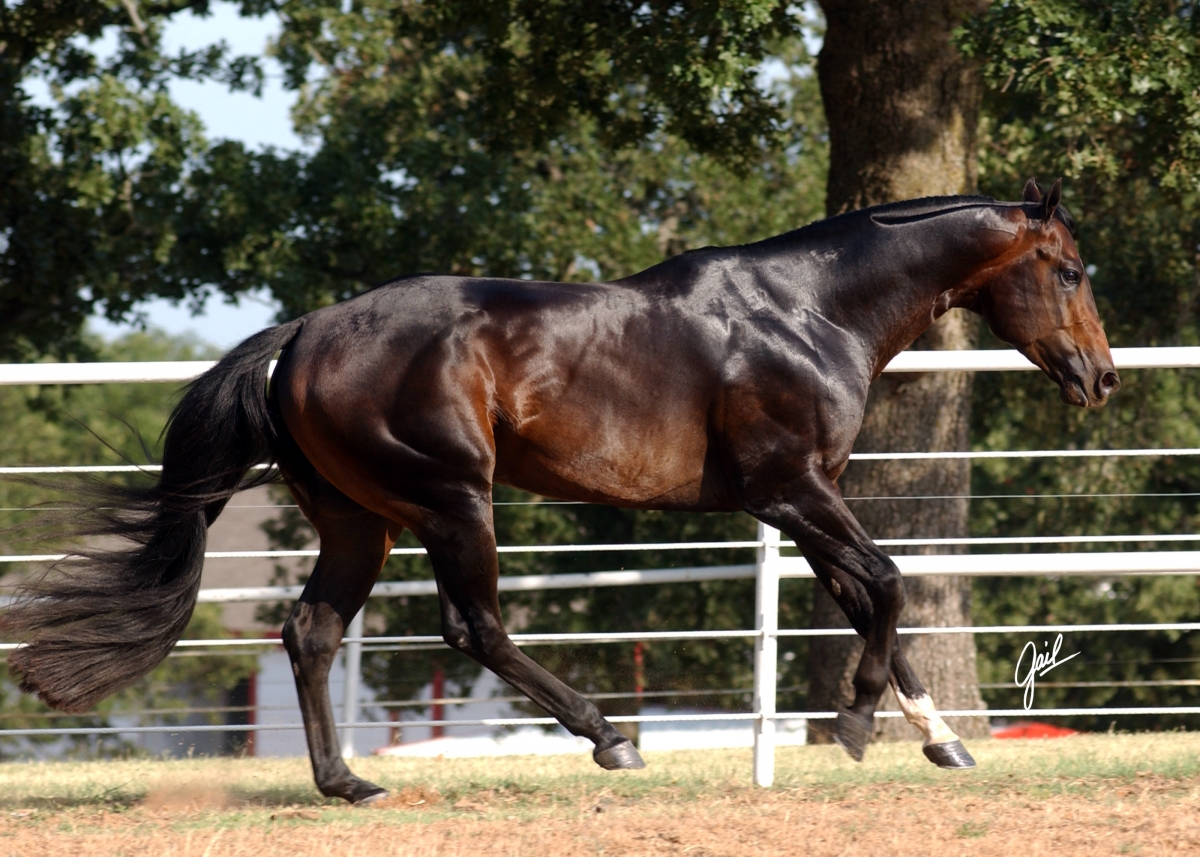 Photo: Gail Bates
Photo: Gail Bates

